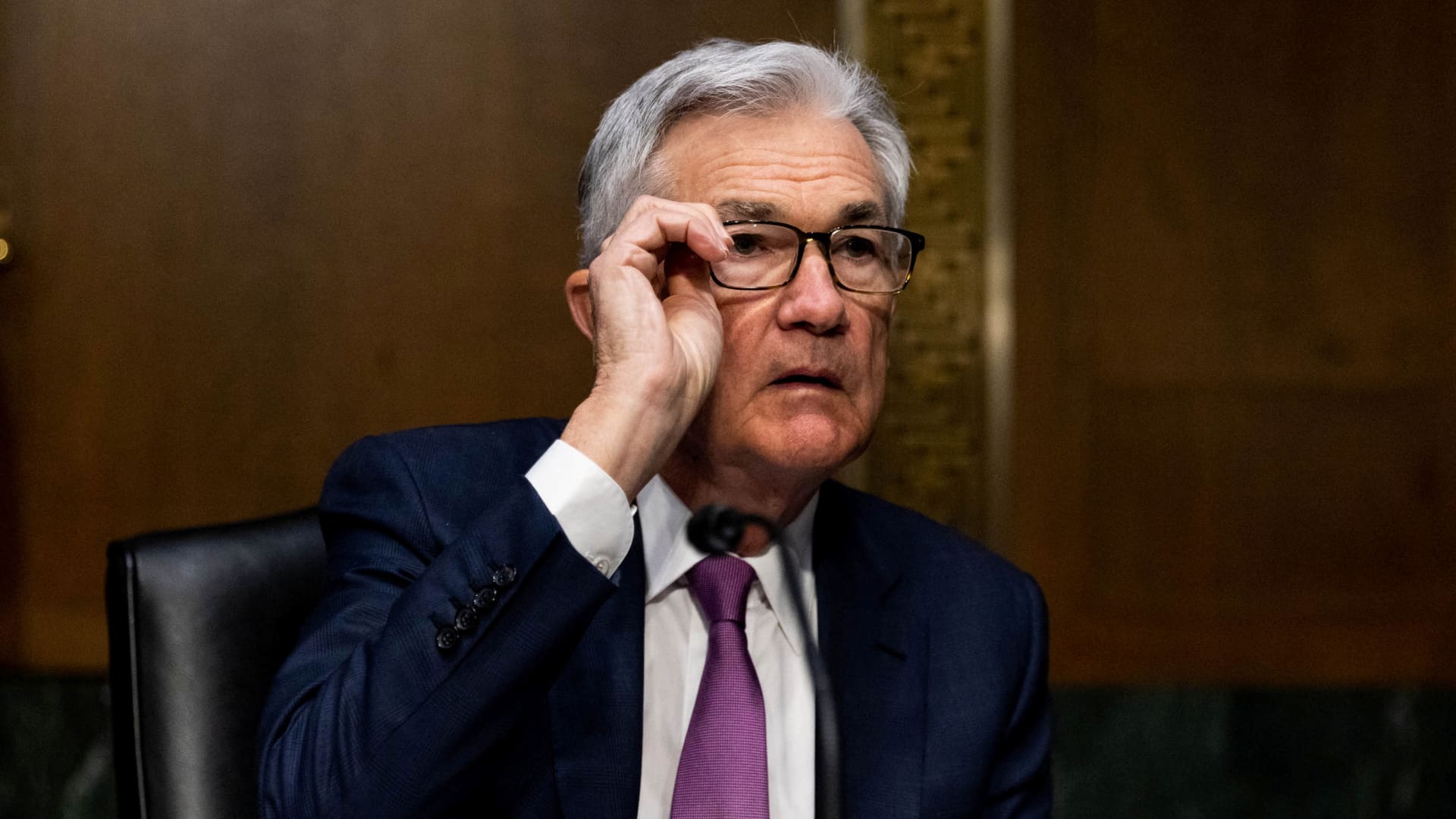Federal Reserve Chairman Jerome Powell affirmed the central bank’s determination to bring down inflation and said Thursday that aggressive rate hikes are possible as soon as next month.
“It is appropriate in my view to be moving a little more quickly” to raise interest rates, Powell said while part of an International Monetary Fund panel. “I also think there is something to be said for front-end loading any accommodation one thinks is appropriate. … I would say 50 basis points will be on the table for the May meeting.”
Powell’s statements essentially meet market expectations that the Fed will depart from its usual 25-basis-point hikes and move more quickly to tame inflation running at its fastest pace in more than 40 years. A basis point equals 0.01 percentage points.
At its March meeting, the Fed approved a 25-basis-point move, but officials in recent days have said they see a need to move more quickly with consumer inflation running at an annual pace of 8.5%.
Market pricing points to a succession of 50-basis-point increases that ultimately will take the Fed’s benchmark overnight borrowing rate to about 2.5% by the end of 2022.
“Our goal is to use our tools to get demand and supply back in synch, so that inflation moves down and does so without a slowdown that amounts to a recession,” Powell said. “I don’t think you’ll hear anyone at the Fed say that that’s going to be straightforward or easy. It’s going to be very challenging. We’re going to do our best to accomplish that.”
“It’s absolutely essential to restore price stability,” he added. “Economies don’t work without price stability.”
The Fed had resisted raising rates through 2021 even though inflation was running well above the central bank’s 2% longer-run target. Under a policy framework adopted in late 2021, the Fed said it would be content with letting inflation running hotter than normal in the interest of achieving full employment that was inclusive across income, racial and gender demographics.
Until several months ago, Powell and Fed officials had insisted that inflation was “transitory” and would dissipate as pandemic-related factors such as clogged supply chains and outsized demand for goods over services abated. However, that those expectations “disappointed” and the Fed has had to change course.
“It may be that the actual [inflation] peak was in March, but we don’t know that, so we’re not going to count on it,” he said. “We’re really going to be raising rates and getting expeditiously to levels that are more neutral and then that are actually tight … if that turns out to be appropriate once we get there.”
This is breaking news. Please check back here for updates.
